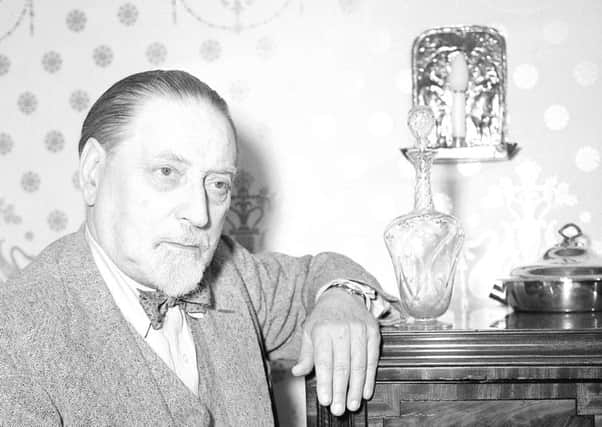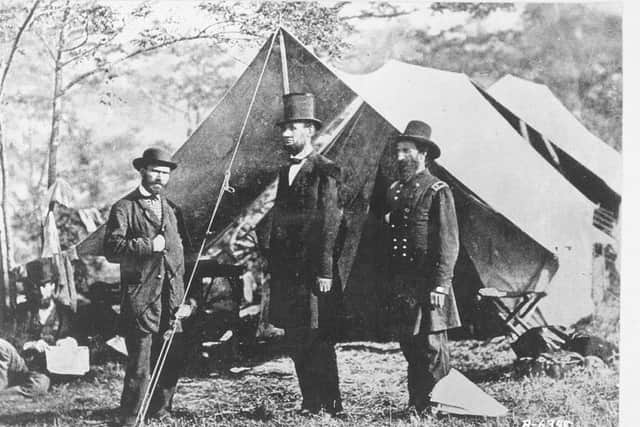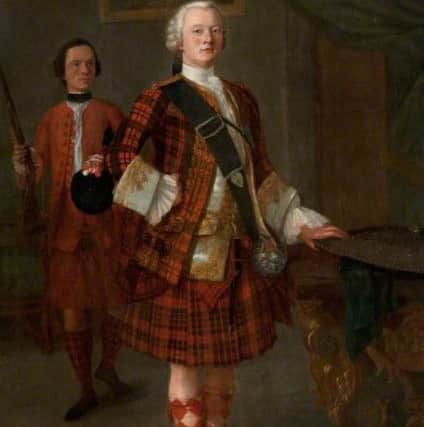5 Scots spies to mark Edinburgh Spy Week


Here we look at 5 real-life spies from Scotland, including the archaeologist and pop star’s mother to the Glasgow man who foiled an assassination attempt against Abraham Lincoln.
Lorraine Copeland
A secret agent with the Special Operations Executive during World War II, Lorraine Copeland (nee Adie) was born in Edinburgh in 1921, the daughter of a neurosurgeon.


Advertisement
Hide AdAdvertisement
Hide AdShe went on to serve in France in the Special Operations Executive which specialised in espionage and reconnaissance work in occupied Europe.
While most of her family in Scotland emigrated to Australia, Copeland was privately schooled in the south of England.
After the war, Copeland became a specialist in prehistoric archaeology of the Near East with her interest developing following her travels to Syria, Lebanon and Egypt with her husband, Miles Copeland, one of the founding members of the CIA.
Copeland, who died in 2013, studied archaeology at the American University in Beirut had four children. One of her sons is Police drummer Stewart Copeland and another, Miles, founded IRS records.


Allan Pinkerton
Advertisement
Hide AdAdvertisement
Hide AdBorn in Gorbals, Glasgow, in 1819, Pinkerton went on to found one of the largest detective agencies in the United States which remains in operation today.
He is credited with pioneering many spying techniques that are still used today and was one of the first detectives to shadow his subjects and ‘assume a role’ on undercover operations.


Pinkerton left Scotland aged 23 and settled near Dundee, Illinois. While working in the woods making barrels, he began observing a group of counterfeiters and passed the information to the sheriff. As a result, he became the first police detective in Chicago. Later he founded Pinkerton and Co, a private detective agency whose business logo was a wide open eye with the caption “we never sleep”.
Pinkerton became well-known for tracking outlaws and specialised in the investigation of train robberies.
Advertisement
Hide AdAdvertisement
Hide AdIn 1861, he foiled an assassination plot against Abraham Lincoln and was then appointed head of Union Intelligence Service during the first two years of the American Civil War.
Alasdair Ruadh MacDonnell


MacDonnell went under the codename “Pickle” after agreeing to spy on Charles Edward Stuart following his return to the Continent after Culloden.
Formerly a loyal Jacobite, he had been imprisoned in the Tower of London after his ship - loaded with troops ready to fight in the 1745 Uprising - was intercepted on its way from France to Scotland.
After serving two years in prison, MacDonnell was expelled to France and remained in poverty with his estates in Scotland seized by the Crown following the end of the rebellion.
Advertisement
Hide AdAdvertisement
Hide AdIn 1749, he travelled to London and agreed to become a spy on behalf of the government with his intelligence reportedly leading to the arrest of a number of Jacobites, including Dr Archibald Cameron of Locheil, the last Jacobite to be executed.
He returned to Scotland in 1754 and took the title of 13th chief of Clan MacDonnell of Glengarry.
William Forbes Sempill, 19th Lord Sempill
This pioneering aviation expert was caught spying for the Japanese but was never prosecuted to protect MI5 operations.
Lord Sempill, raised at Craigievar Castle in Aberdeenshire, was one of the founders of the Royal Flying Corps in WWI.
Advertisement
Hide AdAdvertisement
Hide AdIn 1921, he led an official military mission to Japan to showcase British aircraft engineering and played a key role in developing its Navy Air Service.
However, in 2002, it emerged in Foreign Office papers that he had been caught selling aviation secrets to a Japanese naval attache.
Sempill, who was educated at Eton and who reportedly took on the air of an eccentric Highland laird, was chairman of the Royal Aeronautical Society at the time and went on to be its president.
Despite his disgrace he rejoined the Royal Naval Air Service from 1939 to 1941.
Advertisement
Hide AdAdvertisement
Hide AdHe was not prosecuted in order to conceal MI5’s interception of official Japanese communications.
Sir Compton Mackenzie
The Whisky Galore author was prosecuted in 1932 under the Official Secrets Act for revealing information about Britain’s intelligence service in his WWI memoir.
Mackenzie served as a British intelligence officer in the Eastern Mediterranean and was charged with identifying wartime intelligence officers in his work, Greek Memories.
He exposed how passport control and visa sections of UK embassies were often used as cover for the secret service and disclosed the department of the Secret Intelligence Service‚ now known as MI6 but then known as section “M.I.i.c” of the War Office.
Advertisement
Hide AdAdvertisement
Hide AdMackenzie also revealed that the first head of MI6, Captain Sir Mansfield Cumming, was referred to as C. It is shorthand still used by his successors to sign correspondence.
Mackenzie was persuaded to do a deal and plead guilty to avoid a trial and a possible prison term.
His publisher Cassell agreed to withdraw Greek Memories but it was republished in 2011.
The new version included a memo sent to the government’s law officers by Valentine Vivian, then head of the intelligence service’s counter-espionage section, regarding Greek Memories.
